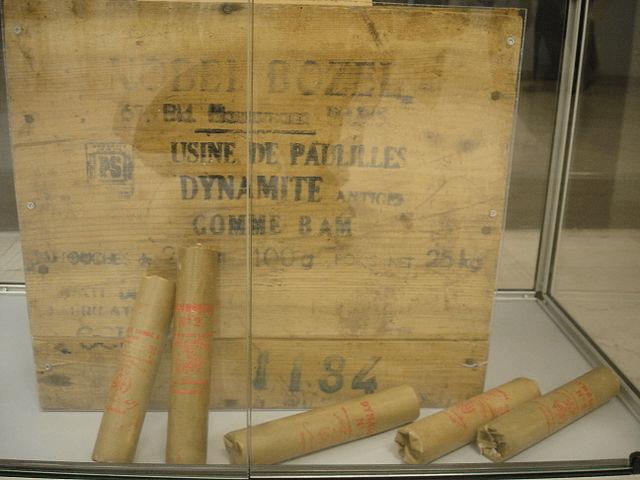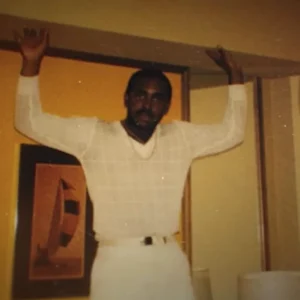An example of ToK Exhibition Prompt 29 – it’s just an example, not the “right” nor “best” answer !
A video of this commentary can be found at this link.
You are viewing: Who Owns Knowledge
This object is the Printing Press used during the Protestant Reformation and French Revolution to disseminate knowledge. The Printing Press demonstrates the claim that Knowledge Producers own knowledge. In this scenario ‘Own’ is defined as influencing the interpretation of knowledge of knowers. The claim here is that it is the people who construct knowledge (“producers”) are able to influence the perspective and knowledge of the knower, and their wider knowledge communities. As such the claim is that Knowledge Producers own knowledge rather than the Knower.
It is argued that through the fast, cheap and mass dissemination of information the printing press has changed what large groups of people know about the world. As such the development of a variety of alternative explanations and interpretations of knowledge, and new knowledge perspectives, could have been enhanced by the Printing Press. In this sense ‘owning’ knowledge is having the ability to influence, or shape, those explanations, interpretations and perspectives through the presentation of knowledge – as the printing press allowed. Further the printing press allowed the physical separation of the knowledge producer from the community of knowers. Arguably this can give the knowledge producer more legitimacy, and possibly authority. In such circumstances the claim to ‘own’ knowledge is stronger as the audience is more likely to attend to knowledge produced by a source deemed legitimate (Cartwright 2022).
Arguably the Printing Press has caused mass religious and social upheaval (Rice and Grafton, 1994). As such, those who produced the knowledge disseminated through the Printing press ‘own knowledge’ as they were able to define that which was known by the knowers reading the product of the printing press. The knowledge producers using the press were able to define, influence, and in some cases, change the accepted norms and values of the knowers. The link between the printing press and the ownership of knowledge is the influence of one knower (the controller of the printing press) over a knowledge community (the readers of the Press). Those using the press were, in some ways, owning the knowledge of those reading the products of the Press.
The second object is a radio that in 1938 broadcast the dramatised version of HG Wells book War of The Worlds. The radio broadcast demonstrates the knowledge claim that The Knower owns knowledge as the broadcast of fictional events was (incorrectly) believed by the audience to be news reports of real events (of an alien invasion of New Jersey). Upon hearing the broadcast some members of the audience panicked, rang the emergency services, left their homes, and ran for shelter (Smithsonian Magazine 2015). The radio broadcast, despite being intended to be a fictional drama, was interpreted by the audience (“The Knower”). As such The knower is said to “own” knowledge as they interpreted knowledge ascribing meaning which differed to that intended by the producer of the knowledge.
The role of the radio in the re-interpretation of the dramatisation is key here. In 1938 the radio was still relatively new as a consumer product (The Development of Radio, PBS). The role of radio as a means of giving factual information, or as a medium for fictional entertainment, was still relatively unclear (Open Lib, 2016). As such, in ‘owning’ knowledge The Knower was reinterpreting knowledge according to the mode of communication rather than solely based on the content of the message. This further links to the idea that what we know is based on how we come to know it ToK Optional Theme Language and Technology). As such, whilst ownership can be claimed to lie with the knower it’s interpretation is, to a degree, moderated by the mode of transmission.

Object 3: A photo of early dynamite produced by Alfred Nobel (1863)
Read more : Who Will Georgia Play In The Sec Championship
Photo Credit in References.
The third object is dynamite, as invented by Alfred Nobel in 1863. Dynamite demonstrates the claim that the contextualised intentions of both the knowledge producer and the knower own knowledge. In this scenario ‘own’ is defined as defining meaning and application. The knowledge claim for including this object is that the context within which knowledge is produced shapes who owns that knowledge. Further, the claim is that the intentions of the knowledge producer (as an element of context) can have an influence on who owns knowledge.
Nobel invented Dynamite as a humanitarian tool to improve the quality of life as it made mining and digging far easier (Tekniska museet, 2021). The purpose and intention of knowledge creation took place within a specific values based context. The context was one of a need to improve the global yields of crop production, Nobel produced Dynamite to clear land to make that possible (Wargin 2009). As such the third object demonstrates that knowledge producers do so with an intentional purpose for the new knowledge. These intentions are part of the context of knowledge production, which it is claimed are integral to who owns knowledge.
However, the knowledge of dynamite was used in an entirely different context as a weapon of destruction (Science Direct, 2021). The context of use of the knowledge determined the ‘meaning’ of the knowledge, and as such it could be argued that this object illustrates how context ‘owns’ knowledge. The particular aspects of context which are pertinent to the operalisation of ownership in this claim are the interpretation of knowledge, the application of knowledge and the inherent meaning of knowledge. This object demonstrates that owning knowledge can have a different articulation from the perspective of the producer to that of the user.
Word Count: 949 words
Other ToK Exhibition Resources can be found at:
Should some knowledge not be sought on ethical grounds ?What counts as knowledge ?What are the examiners thinking ? (ToK Exhibition)
References
Cartwright, M. (2022, March 05). The Printing Revolution in Renaissance Europe. Retrieved from https://www.worldhistory.org/article/1632 /the-printing-revolution-in-renaissance-europe/
Read more : Who Is The Mayor Of Tracy Ca
The Development of Radio. (n.d.). Retrieved from https://www.pbs.org/wgbh/americanexperience/features/rescue-development-radio/#:~:text=The period between the late,millions of listeners across America.
Radio Photo Citation:
“File:Vintage Zenith Tombstone Radio, Model 5S127, Broadcast, Short Wave and Police Bands, 5 Vacuum Tubes, Made In USA, Circa 1937.” Wikimedia Commons, commons.wikimedia.org/wiki/File:Vintage_Zenith_Tombstone_Radio,_Model_5S127,_Broadcast,_Short_Wave_%26_Police_Bands,_5_Vacuum_Tubes,_Made_In_USA,_Circa_1937_(33825555595).jpg. Accessed 21 Mar. 2022.
Magazine, S. (2015, May 06). The Infamous “War of the Worlds” Radio Broadcast Was a Magnificent Fluke. Retrieved from https://www.smithsonianmag.com/history/infamous-war-worlds-radio-broadcast-was-magnificent-fluke-180955180/
Rice, E. F., & Grafton, A. (1994). The foundations of early modern Europe, 1460-1559. Norton.
Dynamite Photo Citation:
“Study.Com | Take Online Courses.” Alfred Nobel Lesson for Kids: Biography, Inventions & Facts, Study.com, 21 Mar. 2022, study.com/academy/lesson/alfred-nobel-lesson-for-kids-biography-inventions-facts.html.
“Alfred Nobel – Dynamit.” Tekniska museet, 7 Dec. 2021, http://www.tekniskamuseet.se/lar-dig-mer/svenska-uppfinnare-och-innovatorer/alfred-nobel-dynamit.
Wargin, Kathy-Jo, and Zachary Pullen. Alfred Nobel: The Man Behind the Peace Prize (True Stories). 1st ed., Sleeping Bear Press, 2009.“Science Direct: Dynamite.” Science Direct, http://www.sciencedirect.com/topics/earth-and-planetary-sciences/dynamite. Accessed 2
Source: https://t-tees.com
Category: WHO

